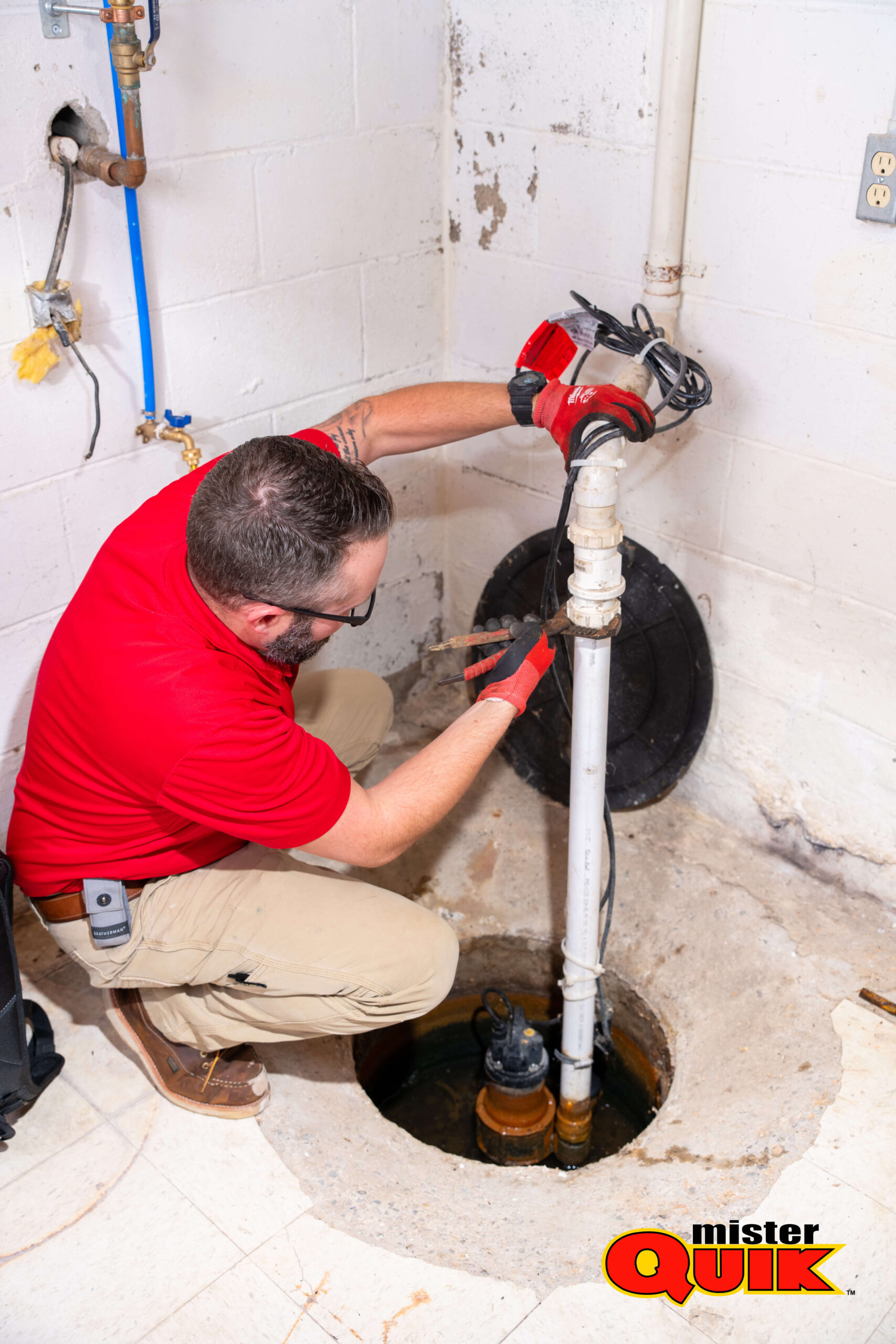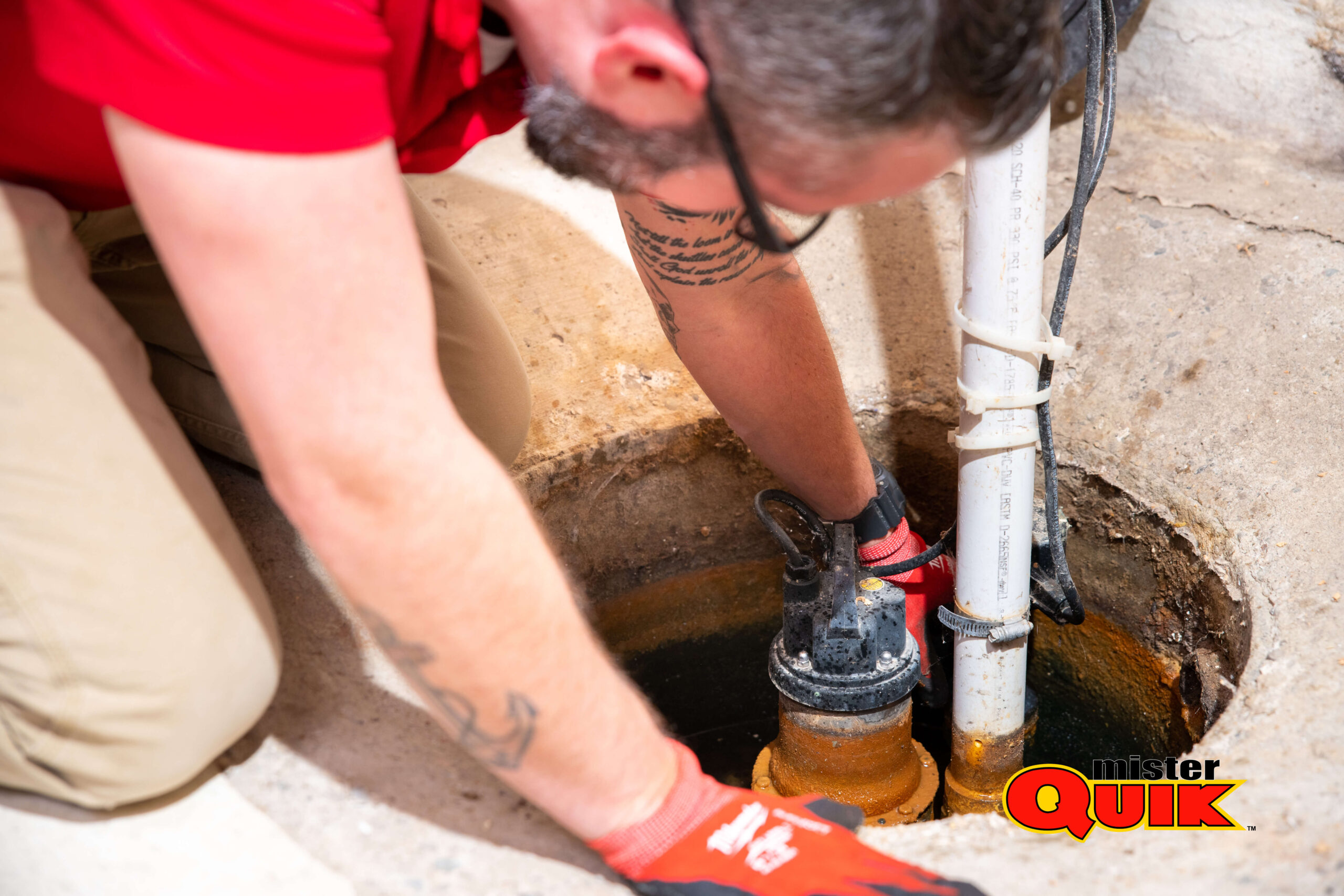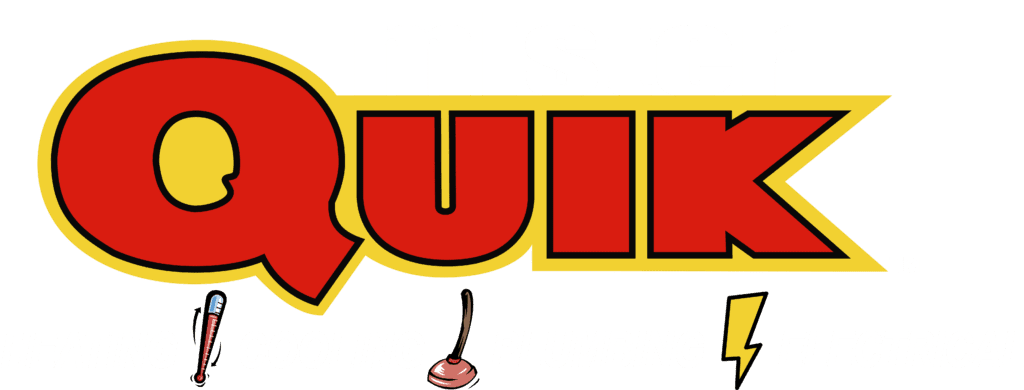Bloomington Sump Pump Installation

Components of sump pump
Understanding the intricate workings of a sump pump is key to safeguarding your basement from potential flooding disasters. Let’s delve deeper into the essential components that make up this crucial system:
- Sump Pit: Picture this as the reservoir where water congregates before the pump takes action. Typically positioned at the lowest point in your basement, it collects excess water to prevent it from pooling and causing damage.
- Pump Motor: Think of this as the powerhouse behind the entire operation. The pump motor is what drives the unit, enabling it to efficiently remove water from the sump pit and redirect it away from your home’s foundation.
- Float Switch: This humble yet indispensable component acts as the pump’s eyes and ears. When water levels in the sump pit rise, the float switch triggers the pump to kick into gear, ensuring timely drainage. Once the water recedes to a safe level, the switch signals the pump to shut off until needed again.
- Check Valve: Imagine this as the gatekeeper of your sump pump system. The check valve’s primary function is to prevent pumped-out water from flowing back into the sump pit. Maintaining a one-way flow prevents unnecessary cycling of the pump and ensures efficient operation.
- Discharge Pipe: This is the conduit through which water is ushered away from your home’s foundation. By directing water to a safe location outside, the discharge pipe plays a crucial role in preventing basement flooding and water damage.
- Backup Power Source: Power outages can strike at the most inconvenient times, leaving your primary sump pump powerless to fend off flooding. That’s where backup power sources like battery backups or generators come into play. By providing an alternative power supply, they ensure uninterrupted sump pump operation during emergencies.
Proper understanding and installation of these components are paramount for effective Bloomington Sump Pump Installation. With the right setup in place, you can trust that your sump pump will rise to the occasion when faced with heavy rainfall or rising water levels.
When it comes to Bloomington Sump Pump Installation, entrusting the job to seasoned professionals is non-negotiable. With their expertise and attention to detail, you can rest assured that every component will be meticulously installed for optimal performance.
Don’t leave your home’s protection to chance. Invest in Bloomington Sump Pump Installation today and enjoy peace of mind knowing that your basement is safeguarded against potential water damage.
Reasons why you need a sump pump in Bloomington
If you’re grappling with the decision to invest in Bloomington Sump Pump Installation, consider these compelling reasons why it’s a must-have for your home:
Bloomington, like many areas, experiences bouts of heavy rainfall, especially during certain seasons. Without a sump pump, your basement could quickly become a breeding ground for mold and mildew as excess water seeps in.
Basements are particularly susceptible to flooding, especially in areas prone to water accumulation. A sump pump serves as a reliable defense mechanism, swiftly removing water before it has a chance to wreak havoc on your property.
Excess moisture can spell trouble for your home's foundation over time, leading to cracks, shifting, and costly repairs. By investing in a sump pump, you're not just safeguarding your basement but also preserving the structural integrity of your entire home.
Damp, dark environments provide the perfect breeding ground for mold and mildew, which can pose serious health risks to you and your family. A sump pump helps keep your basement dry and free of excess moisture, reducing the risk of mold-related health issues.
Sump pump maintenance typically involves several key tasks. Firstly, regular inspection is essential to check for any signs of damage, corrosion, or wear on the pump, float switch, and power cord. Secondly, testing the float switch by pouring water into the sump pit ensures it activates the pump effectively. Thirdly, periodic cleaning of the sump pit and removal of debris help prevent obstructions that could hinder pump operation. Additionally, inspecting the check valve, discharge pipe, and backup systems, if present, ensures they function properly.
Sump pumps are typically installed in a sump pit or basin dug into the lowest point of a basement or crawlspace. The installation process involves several steps. Firstly, the sump pit is excavated to the desired depth and size to accommodate the pump. Next, a layer of gravel is placed at the bottom of the pit to facilitate drainage. The sump pump is then placed in the pit and secured in position. The discharge pipe is connected to the pump, extending upward and away from the foundation to ensure proper drainage. A check valve is installed on the discharge pipe to prevent water from flowing back into the sump pit. Finally, the pump is connected to a power source, such as an electrical outlet, and tested to ensure it operates effectively.
Yes, it is possible to install a sump pump yourself, but it requires careful planning and adherence to local building codes and regulations. The installation process involves several steps, including excavating a sump pit, placing the pump in the pit, connecting the discharge pipe, installing a check valve, and connecting the pump to a power source. Additionally, you may need to adjust the pump’s float switch or sensor to ensure proper activation and deactivation. While DIY installation can save money, it’s important to have the necessary knowledge, skills, and tools to complete the job safely and effectively. If you’re unsure about any aspect of the installation process, it’s advisable to consult with a professional plumber or contractor for assistance.
The depth of a sump pump pit, also known as a sump basin, typically depends on several factors, including the local water table level, the pump’s specifications, and the intended purpose of the sump pump. In general, sump pump pits are commonly dug to a depth of around 24 to 36 inches (about 61 to 91 centimeters). However, in areas with high water tables or frequent flooding, deeper pits may be necessary to accommodate adequate water storage and allow the pump to effectively remove water from the basement or crawlspace.
Yes, a sump pump is typically installed in a sump pit or basin, which is designed to collect groundwater or excess water from the basement or crawlspace. Therefore, it is normal for the sump pump to be submerged in water when it operates. The sump pit allows water to collect around the pump, triggering the float switch or sensor to activate the pump when water levels rise above a certain threshold. The pump then pumps the water out of the pit and away from the building’s foundation through a discharge pipe.
Do you need a professional to install a sump pump?
Installing a sump pump is a critical task that requires precision and expertise. Here’s why seeking professional help for Bloomington Sump Pump Installation is highly advisable:


Sump pump installation involves intricate technical aspects, including electrical wiring and plumbing. A professional installer possesses the necessary knowledge and experience to navigate these complexities safely and efficiently.
Determining the right size and placement of the sump pump is crucial for its effectiveness. A professional installer will assess your basement’s layout and water infiltration patterns to ensure the pump is adequately sized and strategically positioned for optimal performance.
Building codes and regulations govern the installation of sump pumps to ensure safety and functionality. A professional installer is well-versed in these requirements and will ensure that your sump pump installation complies with all relevant codes.
Installing a sump pump requires specialized equipment and tools that may not be readily available to the average homeowner. Professional installers come equipped with the necessary tools and know-how to complete the installation efficiently and effectively.
Many sump pumps come with warranties that may require professional installation for validation. By hiring a professional installer, you can ensure that your warranty remains intact, providing you with added peace of mind.
Sump pump installation near me
If you’re searching for “sump pump installation near me” in Bloomington, it’s essential to prepare adequately for the service. Here are some steps to ensure a smooth installation process:


Take a thorough look at your basement to determine the best location for the sump pump. Ideally, it should be placed in the lowest point of the basement where water tends to accumulate.


Before the installation team arrives, clear any clutter or obstacles from the designated installation area. This will facilitate easy access and allow the installers to work efficiently.


Make sure there's a nearby electrical outlet for the sump pump to plug into. If not, consider having one installed before the installation date to avoid delays.
Sump pump installation service near Bloomington
If you’re in need of a sump pump installation service near Bloomington, it’s essential to understand what this service typically entails. Here’s what you can expect:
- Initial Assessment: The installation team will conduct a thorough assessment of your basement to determine the best location for the sump pump. They’ll consider factors such as water accumulation patterns and existing drainage systems.
- Sump Pump Selection: Based on the assessment, the installation team will help you select the right sump pump for your needs. They’ll consider factors such as pump capacity, power source options, and additional features like backup systems.
- Preparation Work: Before installing the sump pump, the team will prepare the designated area by clearing any debris or obstacles. They may also need to make adjustments to the electrical or plumbing systems to accommodate the new pump.
- Installation Process: The installation team will carefully install the sump pump according to manufacturer guidelines and industry best practices. This includes setting up the pump, connecting it to the electrical supply, and ensuring proper positioning of the discharge pipe.
- Testing and Calibration: Once the sump pump is installed, the team will conduct thorough testing to ensure that it functions correctly. They’ll calibrate the float switch and check for any leaks or malfunctions to guarantee reliable performance.
- Demonstration and Instruction: Before they leave, the installation team will provide you with a demonstration of how the sump pump operates. They’ll also offer instructions on basic maintenance tasks you can perform to keep the pump in optimal condition.
- Cleanup and Disposal: After the installation is complete, the team will clean up any debris or mess created during the process. They’ll also dispose of any old equipment or materials removed during the installation, leaving your basement tidy and clutter-free.
- Follow-Up Support: A reputable sump pump installation service near Bloomington will offer follow-up support to address any questions or concerns you may have after the installation. They’ll be available to provide assistance and troubleshooting if needed.
Sump pump maintenance in Bloomington
When it comes to keeping your sump pump in prime condition, entrusting the task to professionals can offer peace of mind and ensure effective operation. Here’s what you can expect from professional sump pump maintenance services in Bloomington:
Professional technicians will conduct a comprehensive inspection of your sump pump system to identify any signs of wear, damage, or malfunction. This includes checking the pump, float switch, discharge pipe, and backup power source.
Over time, debris and sediment can accumulate in the sump pit and impede the pump's performance. Professional maintenance includes thorough cleaning of the sump pit, pump, and impeller to ensure optimal water flow.
The float switch and check valve are critical components of the sump pump system. Professional technicians will test these components to ensure they are functioning correctly and replace them if necessary to prevent potential failures.
Proper electrical connections are essential for the safe and reliable operation of your sump pump. Professional maintenance includes inspecting electrical connections, wiring, and components to identify any issues and ensure compliance with safety standards.
If your sump pump has a battery backup system, professional technicians will inspect and test the batteries to ensure they are functioning properly. They'll also check the charging system and replace batteries as needed to ensure reliable backup power during emergencies.
By investing in professional sump pump maintenance services in Bloomington, you can prolong the life of your sump pump, minimize the risk of malfunctions or failures, and ensure that your home remains protected against potential water damage. Regular maintenance is essential for preserving the effectiveness of your Bloomington Sump Pump Installation and safeguarding your home’s integrity.
Troubleshoot Checklist:
- Inspect the sump pit for debris and ensure it’s clear for water collection.
- Verify that the pump motor is running smoothly without unusual sounds or vibrations.
- Pour water into the sump pit to test if the float switch activates the pump.
- Ensure the check valve is preventing water from flowing back into the sump pit after pumping.
- Check the discharge pipe for any clogs or obstructions that may impede water flow.
- Verify that drainage routes are clear and directing water away from the foundation.
- Test battery backups or generators to ensure they’re functioning properly during power outages.
- Replace batteries if needed to maintain reliable backup power.
- Schedule professional maintenance to conduct a thorough inspection and cleaning of the sump pump system.
- Discuss with technicians any issues or concerns identified during troubleshooting for expert guidance and resolution.









